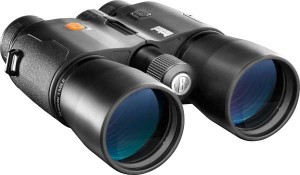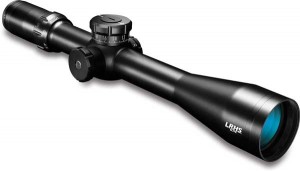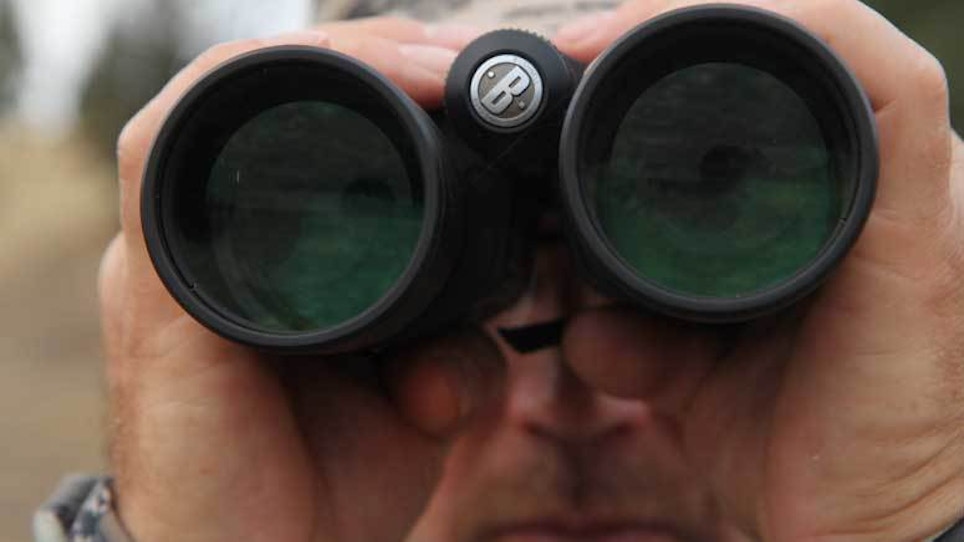For most of my muzzleloader hunting career I’ve spent days on the shooting range to perfect the exact point of impact at various ranges with every rifle and load combination I hunt with. I’ve always said the only way to be sure of the bullet drop at different distance is to shoot and measure it at 25-yard intervals to the maximum range I’d be willing to shoot. What that meant for me is setting up targets from 100 to 250 yards. That was at least seven different targets where I could actually see and measure the bullet drop over short distance spans. It was always educational and has allowed me to harvest some big deer over the years when they simply appeared within range.
Like everything in life today, we are all looking for shortcuts to make things easier and bring success quicker. The introduction of laser rangefinders was revolutionary to muzzleloader hunting. Knowing the exact range allowed shooters to compensate for bullet drop and make the perfect shot. That is, if you had practiced and knew what your bullet was doing at different distances.
Some apps you can download on your smartphone will tell you the exact trajectory of your bullet at a given distance, but who has the time to range an animal, get out their phone, plug in the data, and hope the deer is still standing in its tracks with a birthmark on its side that looks like a target?
There are riflescopes with reticles with hash marks for different distances, but there is still a degree of inaccuracy that leaves me hoping it will work. I guess I’ve learned over the years that shooting a muzzleloader requires attention to detail, and the more precise the information you use, the better your shot placement and success.
Being old school, I like to see the results for myself, which is why I set up multiple targets and shot all of them. However, it doesn’t preclude me from trying something new, and when Bushnell introduced its Fusion binocular, I was anxious to try them. They have a built-in rangefinder, and the newest model, Fusion 1 Mile, can actually range objects out to 1,800 yards. I have played with it extensively and like the fact it will give me a reading when most of the handheld models won’t. The larger objective lenses, being able to hold the binoculars with both hands, and the ability to stabilize my arms against my body likely help produce the readings. Smaller, single-hand rangefinder models are much more difficult to hold steady, and even using a rest, they often don’t produce a reading for objects out at extended distances.
The real benefit of the Fusion binocular is the information it provides in rifle mode for muzzleloader hunters. Using the ballistic coefficient and load data for the majority of muzzleloaders, you can set the rifle mode in the binocular to “J”. What it will provide in the bottom of the sight picture is line of sight, angle, bullet drop and information for holdover up to 199 inches. This data is extremely important, as you can look at and range a deer and know not only how far it is, but also how far you need to hold over the point of impact where you want your bullet to enter the animal.
To take even more of the guesswork out of the equation, the ARC (angle range compensation) feature in the unit also takes the up or down angle into account and automatically adjusts for it. If you are hunting in the mountains or steep banks of a coulee or river valley, you can range a deer and know exactly where to hold. It won’t matter whether you are shooting uphill or down — the angle compensation will be calculated and provided instantly.
 Of course, I had to field test my binoculars and see for myself if they really worked. For instance, I would shoot a target at 200 yards and aim for the bull’s-eye. My binoculars would tell me the holdover for the target, and when I shot, with my rifle zeroed for 100 yards, the point of impact for my bullet was within a couple of inches of what my binos told me. The holdover can be set to read in centimeters or inches, but can also be used with MOA or Mil adjustments.
Of course, I had to field test my binoculars and see for myself if they really worked. For instance, I would shoot a target at 200 yards and aim for the bull’s-eye. My binoculars would tell me the holdover for the target, and when I shot, with my rifle zeroed for 100 yards, the point of impact for my bullet was within a couple of inches of what my binos told me. The holdover can be set to read in centimeters or inches, but can also be used with MOA or Mil adjustments.
The technology in the binoculars is now available in the Bushnell Elite 1 Mile ARC rangefinder with bullet compensation and 7X magnification, and it, too, provides bullet-drop/holdover in centimeters, inches, MOA and Mil.
Just when I thought I’d found the perfect tool for shooting any distance with my muzzleloader, Bushnell introduced the Elite Long Range Hunter (LRHS) scope. This scope is very popular among hunters with centerfire rifles, but should not be overlooked for the huge advantage it provides for muzzleloader enthusiasts.
It features a 30 mm, one-piece tube, but the magic is in the turret, which has .1 Mil click adjustments with full 10 Mils per revolution of adjustment. Now before you turn the page and roll your eyes because there is no way you are going to learn to use Mil adjustments, let me explain why you don’t need to.
 Bushnell has married the information from the rangefinders with the turret on the scope, so all you have to do is sight in the scope on your favorite muzzleloader at 100 yards. In the rangefinder menu setting, use “J” in rifle mode to match the ballistic coefficient for most front-stuffer bullets. Information on the Bushnell Web page will help you choose the right rifle setting for a variety of calibers and ammunition, including muzzleloaders. Choose 100 yards when asked what distance your rifle is zeroed for, then set you binocular to provide bullet adjustment in Mils.
Bushnell has married the information from the rangefinders with the turret on the scope, so all you have to do is sight in the scope on your favorite muzzleloader at 100 yards. In the rangefinder menu setting, use “J” in rifle mode to match the ballistic coefficient for most front-stuffer bullets. Information on the Bushnell Web page will help you choose the right rifle setting for a variety of calibers and ammunition, including muzzleloaders. Choose 100 yards when asked what distance your rifle is zeroed for, then set you binocular to provide bullet adjustment in Mils.
Here’s the simplicity of the system. Range your target, and in the bottom of the display you will see the exact Mil adjustment to make on the scope’s turret to be dead on. I have used the system with muzzleloaders and centerfire rifles and was thrilled with the results. I can be on target at any range and don’t have to practice at different intervals. As a matter of fact, I’d strongly suggest you set targets out randomly and shoot them at ranges you would experience when hunting. When you sight something at 187 or 234 yards and can simply dial the turret to the number you see in the rangefinder to be on target, you will appreciate the way the optics work together.
The LRHS is available in 3-12x44, and a new model coming out in 2015 will offer more magnification for those who want it. The 12X setting is more than sufficient for accurately shooting ranges out to 300 yards with a muzzleloader.
There is wide application for the system, and the obvious one is hunting out West in open country. Anyone hunting mountains, river valleys or places with steep terrain will appreciate the angle compensations, taking the guesswork out of where to hold on a target. Where it really shines is for any shots over 100 yards, where we can be much more precise than ever before. Thinking you can sight in at 100 yards and be good with a direct hold to 150 yards because it is close enough, isn’t good enough. Why not be dead-on accurate rather than within a half-foot with your point of impact?
The best way to understand the system is to see it in person. Go to your favorite sporting goods store and try the binocular or rangefinder for yourself. See how easy it is to use the menu, set up for information on bullet drop or Mil adjustments and then make a decision on whether it will work for you. Step outside with it and try it at a variety of ranges. You’ll know instantly if you like it or not.
There are traditional shooters who might not like taking all the calculations out of muzzleloader hunting, but for those who want the utmost accuracy when that buck of a lifetime steps out, they will have it.






